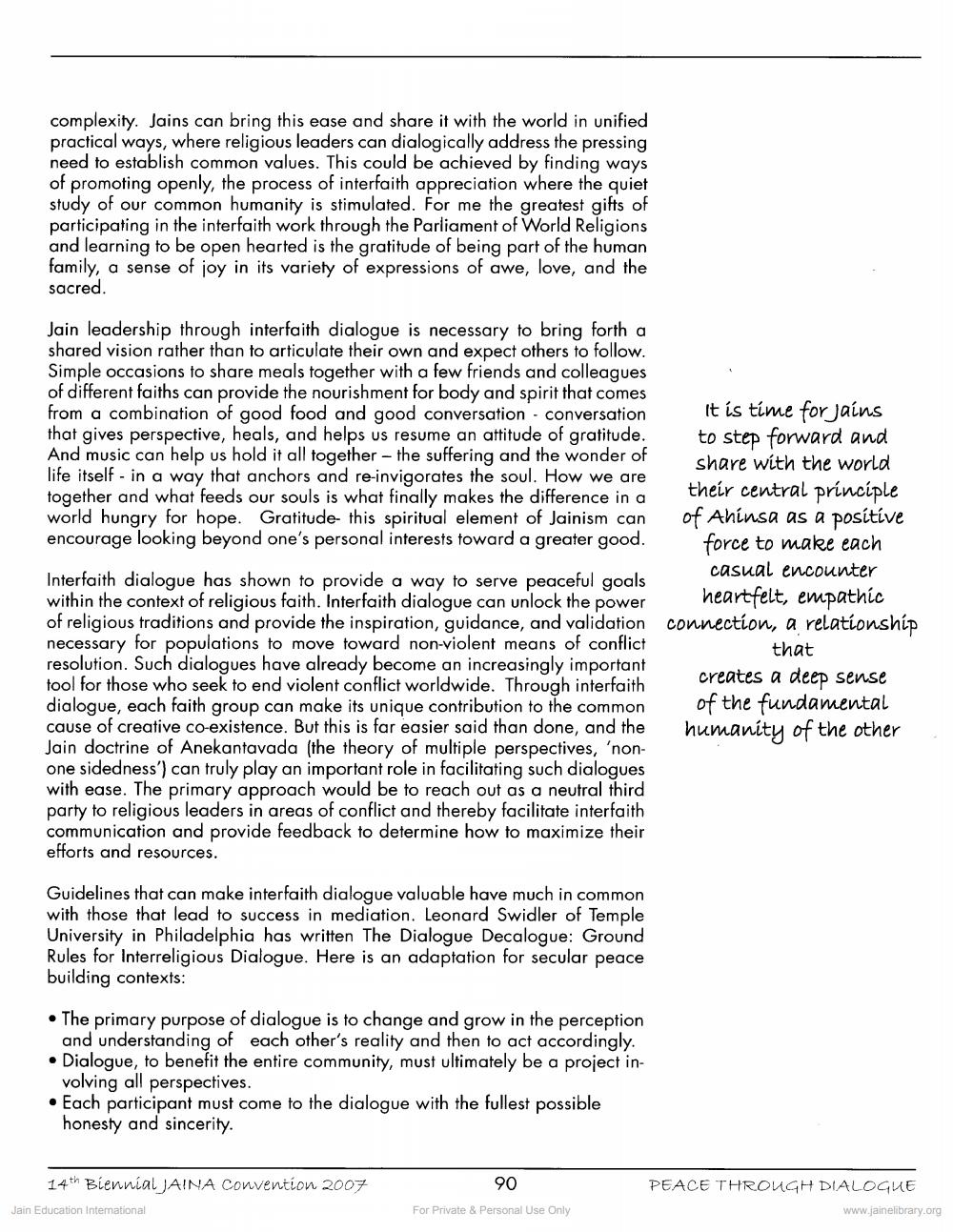________________
complexity. Jains can bring this ease and share it with the world in unified practical ways, where religious leaders can dialogically address the pressing need to establish common values. This could be achieved by finding ways of promoting openly, the process of interfaith appreciation where the quiet study of our common humanity is stimulated. For me the greatest gifts of participating in the interfaith work through the Parliament of World Religions and learning to be open hearted is the gratitude of being part of the human family, a sense of joy in its variety of expressions of awe, love, and the sacred.
Jain leadership through interfaith dialogue is necessary to bring forth a shared vision rather than to articulate their own and expect others to follow. Simple occasions to share meals together with a few friends and colleagues of different faiths can provide the nourishment for body and spirit that comes from a combination of good food and good conversation - conversation that gives perspective, heals, and helps us resume an attitude of gratitude. And music can help us hold it all together - the suffering and the wonder of life itself - in a way that anchors and re-invigorates the soul. How we are together and what feeds our souls is what finally makes the difference in a world hungry for hope. Gratitude this spiritual element of Jainism can encourage looking beyond one's personal interests toward a greater good.
Interfaith dialogue has shown to provide a way to serve peaceful goals within the context of religious faith. Interfaith dialogue can unlock the power of religious traditions and provide the inspiration, guidance, and validation necessary for populations to move toward non-violent means of conflict resolution. Such dialogues have already become an increasingly important tool for those who seek to end violent conflict worldwide. Through interfaith dialogue, each faith group can make its unique contribution to the common cause of creative co-existence. But this is far easier said than done, and the Jain doctrine of Anekantavada (the theory of multiple perspectives, 'nonone sidedness') can truly play an important role in facilitating such dialogues with ease. The primary approach would be to reach out as a neutral third party to religious leaders in areas of conflict and thereby facilitate interfaith communication and provide feedback to determine how to maximize their efforts and resources.
It is time for Jains to step forward and share with the world their central principle of Ahinsa as a positive
force to make each casual encounter
heartfelt, empathic connection, a relationship
that creates a deep sense of the fundamental humanity of the other
Guidelines that can make interfaith dialogue valuable have much in common with those that lead to success in mediation. Leonard Swidler of Temple University in Philadelphia has written The Dialogue Decalogue: Ground Rules for Interreligious Dialogue. Here is an adaptation for secular peace building contexts:
• The primary purpose of dialogue is to change and grow in the perception
and understanding of each other's reality and then to act accordingly. • Dialogue, to benefit the entire community, must ultimately be a project in
volving all perspectives. • Each participant must come to the dialogue with the fullest possible honesty and sincerity.
14th Biennial JAINA Convention 2007
90 For Private & Personal Use Only
PEACE THROUGH DIALOGUE
www.jainelibrary.org
Jain Education Intemational




